Teach you how to plant potted plants at home
Usually after eating fruit, we always fantasize about planting the remaining seeds into saplings. When we plant seeds into saplings, there is not only a sense of joy, but also for us to visit. So here are some ways to use seeds to make potted plants.
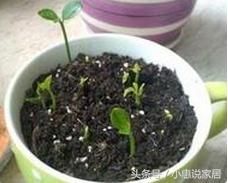
1. Apple potted plant
Remove the apple core from the chewed apple core, wash and scratch it out and set aside. Prepare a small iron or plastic box, paper towels and a spray bottle full of water. Spread a tissue at the bottom of the box, put the washed apple seeds on the tissue, and cover it with a tissue. Wet the tissue with a spray bottle and be careful not to spray too much water to prevent the seeds from rotting. Close the lid and put it in a cool place to sprout. The seeds will germinate in about 2-3 days. Germinated seeds can be transplanted into flowerpots for soil cultivation and will flourish in a few days. Move the flowerpot to the window to let the apple seedlings get enough sunlight and let them thrive.
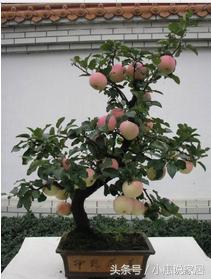
two。 Longan potted plant
Leave the core of the longan after eating, and then remove the pulp and white soft tissue from the top. In about two days, the shell of the longan core has gradually cracked, and the water needs to be changed every day. Soak in water for about a week, the bud point upward, arranged from the outside to the inside into the pot. Spray two times a day, and it will begin to sprout after a week. In about a month, it will grow into a small forest.
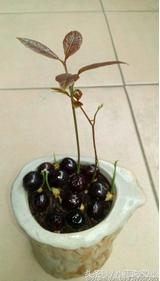
3. Lemon potted plant
Cut the lemon, take out the lemon seed, wash it and soak it in water for about two or three days. After soaking, the film on the surface of the lemon seed softens, at this time, peel the shell of the lemon seed. Put the shelled seeds on the wipes and cover them with a layer of wet paper towels. After drying for 1-2 weeks, the seeds will sprout slowly. When the buds grow longer, you can move the seeds into small flowerpots.
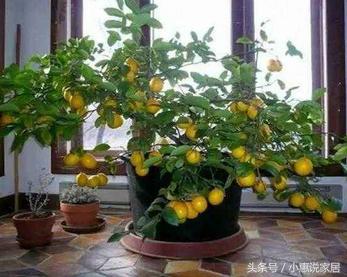
4. Potted radish
Prepare a carrot, cut off a large piece of the head of the carrot, put it in a water tank, and let it grow freely. Try to grow in a slender water vessel, and the leaves will run straight up and relatively high. Remember to change the water frequently. Grow many leaves and then take them out and put them in a suitable beautiful container, so that the shape will be more straight and energetic. Otherwise, its leaves will grow on one side and spread out as if they were not alive.
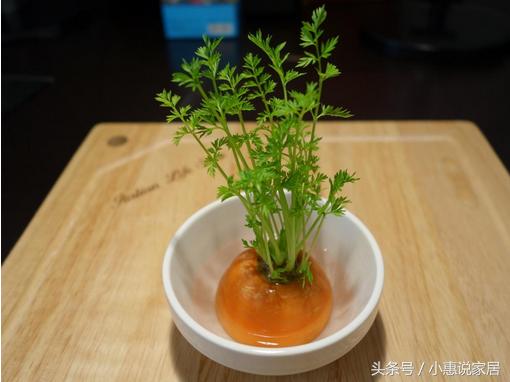
5. Grapefruit potted plant
After eating the grapefruit, wash the seeds and remove the shell from the surface with tweezers. Soak in water for 5 to 7 days and change the water every day so that the water doesn't stink and the seeds don't go bad. Find a vessel or cup you like and fill it with wet soil. Place the soaked grapefruit seeds in a dish with small heads up and cover them with coarse sand or pebbles. It can also be covered with plastic wrap, spray some water in 2 to 3 days, and sprout in a week or so. Sprouting is also 2-3 days to spray some water to keep moist, conducive to growth.

6. Pineapple potted plant
Prepare a healthy pineapple, remove the crown bud, carefully tear off the small leaves at the bottom, expose the white part, and try not to destroy the root primordium under the leaf scar. Then put the crown bud horizontally in a ventilated place and let it dry for two days until the incision is dry and healed, which can prevent decay. At this time, hang the crown bud in the mouth of the bottle, as close as possible to the surface of the water but avoid contact. When the root grows to about 0.5cm, it will be ready for transplant. If the planting substrate needs to be well drained, perlite can be used to mix the soil. Always keep the soil slightly moist, but not wet or dry. The stem will really give off strong roots in about 6-8 weeks. Do not rush this process, avoid frequent watering and fertilization, you should pay attention to this. After about two months, the crown bud of pineapple has developed into a new plant. At this point you will notice that, slowly, the leaves of the original pineapple crown bud will begin to die, turn brown, and new leaves will begin to grow. In the course of the following year, cut off the original leaves. During this period, pineapples should be watered no more than once a week.
- Prev
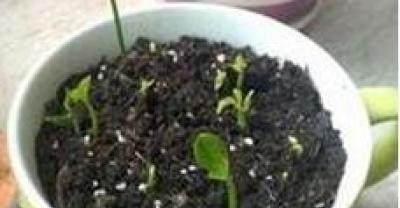
The planting method of pot cultivation of heart vegetable
Chinese cabbage, also known as heart-saving cabbage, is a special vegetable that can improve immunity and relieve fatigue and prevent and cure heart disease. So you know how to grow cabbage.
- Next
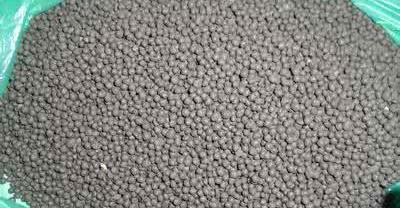
The planting technology of celery in greenhouse had been known for a long time.
In Lu's Spring and Autumn original Flavor, it is recorded that "the beauty of food, the celery of Yunmeng", celery is not only delicious diet, but also high nutritional and medicinal value, in addition to rich.
Related
- Fuxing push coffee new agricultural production and marketing class: lack of small-scale processing plants
- Jujube rice field leisure farm deep ploughing Yilan for five years to create a space for organic food and play
- Nongyu Farm-A trial of organic papaya for brave women with advanced technology
- Four points for attention in the prevention and control of diseases and insect pests of edible fungi
- How to add nutrient solution to Edible Fungi
- Is there any good way to control edible fungus mites?
- Open Inoculation Technology of Edible Fungi
- Is there any clever way to use fertilizer for edible fungus in winter?
- What agents are used to kill the pathogens of edible fungi in the mushroom shed?
- Rapid drying of Edible Fungi

